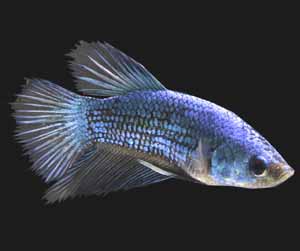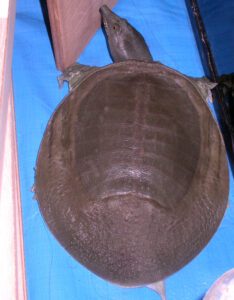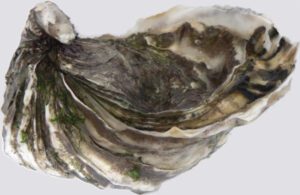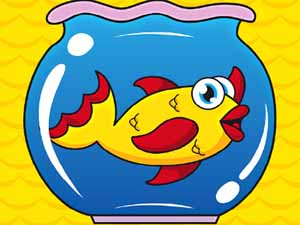The koi betta fish is a very beautiful ornamental fish. It is very popular among the aquarist mainly due to the beautiful coloring, unique appearance, and gentle nature. These fish are wonderful pets, and they generally require less caring and other management.
Betta fish are known for their bright colors and flowing fins. The koi betta is a special kind of betta fish which was named after koi fish (which are also very beautiful and colorful). The koi betta fish has patterns that look like the patterns on koi fish, hence the name.
They have a mix of several colors like white, red and orange. Each koi betta fish is unique, so not two look exactly the same. However, read more information about this fish below.
What is a koi betta fish?
A koi betta fish is a very beautiful, colorful and special kind of betta fish. The betta fish are actually known for their bright colors and flowing fins. The koi betta is not an exception, they are also very colorful creatures. Koi betta is actually a selectively breed variation of betta fish. And it is actually not a hybrid offspring of a betta and a traditional koi. The term “Koi” in their name means, they have similar color like the koi fish. Original habitat of the koi betta fish is in Southeast Asia, typically Thailand and Vietnam. These fish are usually found in stagnant or slow-moving waters with dense vegetation.

Characteristics
The koi betta fish have distinctive physical characteristics which makes them apart from other fish. They have vivid colors and you can see shades of red, white, orange and sometimes black. Their color patters is similar to koi carp fish. The most important thing about their color pattern is, each koi betta fish has its own pattern and each one is unique.
The body of koi betta fish is small, and compact. They usually grow to be around 2 to 3 inches long. Their body is streamlined and is slender and smooth. They have long, flowing fins and their fins can be the same color as their bodies or a different color. Their fins are of different shapes such as crowntail, veil tail and halfmoon. Each type has its own style.
Head of the koi betta fish is distinct with a pointed snout. They usually have round eyes which can vary in color, and their eyes are bright and alert. Their scales are smooth and shiny. Their scales reflect light, which makes the fish look even more colorful and eye-catching.
Male koi betta fish
The male koi betta fish often have more vibrant colors and relatively longer fins as compared to the females. They are sometimes more territorial and can be aggressive towards other males. The males may have red, white, and black patterns similar to koi. They can reach around 3 inches long.
Female koi betta fish
The female koi bettas typically have shorter fins and less intense colors. They are generally calm and not aggressive like the males. They have less intense colors. They can grow a maximum of 2.5 inches.
Dietary Requirements
Feeding the koi betta fish with very good quality and nutritious food is very important. These fish generally require a diet high in protein. High quality and protein rich food helps them to grow well and maintain their beautiful colors. You can provide your fish different types of food depending upon the availability in your area. You can provide them betta fish pellets, frozen or live food, and flake food. Provide food to your fish twice a day in small portions. And always try to feed them at the same time daily.
Reproduction
You need to have a pair to breed the koi betta fish. Choose healthy fish, and feed the fish properly before breeding. You should use a separate tank or breeding container for using in koi betta fish breeding process. A 10 gallons tank is generally sufficient for breeding purpose. Maintain the water temperature between 24-28°C. Ensure that the water is clean and free of chemicals.
Place the female in a separate container within the breeding tank. This will allow the male to see the female but prevents immediate contact. The male will start to show off his colors and flare his fins to attract the female. And the female will respond by showing interest. The female can show her interest by displaying vertical stripes and a relaxed posture. When the female is ready, she will swim under the bubble nest, and the male will wrap around her in a mating embrace. And the female will release eggs during this embrace. And then the eggs will float up to the bubble nest.
After spawning, the male koi betta will take care of the eggs, and he will collect any fallen eggs and place them back into the bubble nest. Remove the female koi betta fish from the breeding tank after spawning. Doing this is very important to prevent aggression form the male. Because the koi bettas can be aggressive towards each other, especially after mating.
The eggs will hatch in about 24-48 hours. Then the baby fish will stay in the bubble nest or a few days while they develop and absorb their yolk sacs. Remove the male koi betta from the tank. Feed the baby fish infusoria or specially prepared fry food, and gradually introduce them to larger foods as they grow. Always try to monitor their health on a regular basis.
Behavior
The koi betta fish are known for being territorial. Particularly, the males are aggressive towards each other, and will fight if you put them together in the same tank. Keep the male and female koi bettas separated from each other. Although the koi bettas can be kept with other peaceful species that do not have long fins or display aggressive behaviors. Snails or shrimp are some good tank mates for the koi bettas. The male koi betta fish build bubble nests at the surface of the water. They generally do this by blowing bubbles that stick together. These bubble nests are used to hold eggs during the breeding process.
Caring
Taking good care of the koi betta fish is very important. Try to provide them with a well maintained tank of at least 5 gallons, with a gentle filter and a heater for keeping the water between 24-28°C. Always try to provide them with very high quality betta pellets and occasional live or frozen food. Change their water on a regular basis, and test the water to maintain good conditions inside the tank. Provide a tank with decorations that offer hiding spots and enrichment, and keep male bettas separated to prevent aggression. Regularly check on your bettas for any signs of illness and maintain a stable environment to ensure their well-being.

Lifespan
Average lifespan of the koi betta fish is between 2 to 4 years.
Uses
The koi betta fish are mainly valued and used as pets. Although, they are also often used in aquarium decoration, educational purposes and breeding projects.
Price
Exact price of the koi betta fish can vary based on several factors. Their price can vary depending on their coloration, fin type, and from where you purchase them. On an average, you can expect the price of koi betta fish ranging from $20 to $50.
Any Koi betta fish for sale near me?
You can buy koi betta fish from many sources near your area. You can purchase from your local fish breeders, aquarium shows and events, specialty fish stores, social media and forums, and from online retailers.





